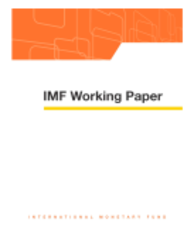
Using An EC-Wide Monetary Aggregate in Stage Two of EMU
This paper looks at whether the aggregate ERM money supply has been a useful predictor of short-term changes in inflation and growth, and long-term trends in price levels among the core ERM countries. The evidence suggests that over the period since 1987, when there have been no realignments, the ERM money supply performs at least as well, and arguably better, than the individual national aggregates in predicting nominal aggregates such as inflation and the price level, while neither money supply is a good predictor of real activity.
Publication date: July 1992
ISBN: 9781451847673
$15.00
Add to Cart by clicking price of the language and format you'd like to purchase
Available Languages and Formats
| English |
Prices in red indicate formats that are not yet available but are forthcoming.
Topics covered in this book
This title contains information about the following subjects.
Click on a subject if you would like to see other titles with the same subjects.
Inflation , money supply , inflation , monetary aggregate , money supplies
Summary
Copyright © 2010 - 2025
Powered by:
AIDC



